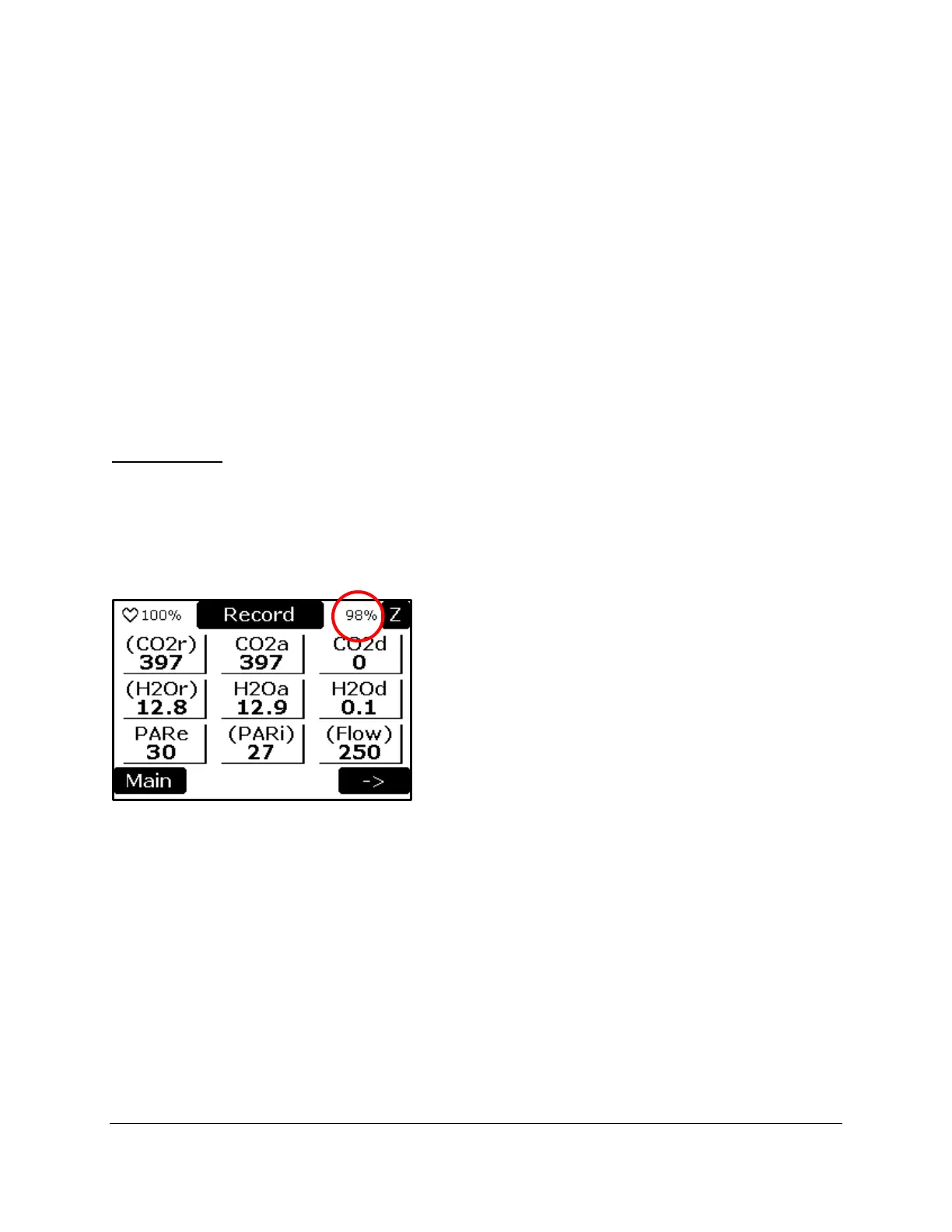TARGAS-1 Operation Manual V. 1.02 33 support@ppsystems.com
Analysis Software) on page 136 for more information. When using a terminal emulator, the COM port
settings to communicate with the EGM-5 are: 19200 baud, 8 bit, 1 stop, no parity, no flow control.
Absorber Columns
There are 3 absorber columns used with the TARGAS-1. One column is for Auto-Zero and the other two
columns are for CO
2
and H
2
O control.
Auto-Zero Column
The Auto-Zero column contains a CO
2
and H
2
O scrubbing desiccant called “Molecular Sieve”. When air
passes through this column, it removes all of the CO
2
and H
2
O from the air stream. The “Auto-Zero”
function built into the TARGAS-1 periodically switches the flow of gas from the analyzer through this
column to check the analyzer zero. This routine ensures long term stability and accuracy of the CO
2
and
H
2
O gas analyzers. It automatically corrects for such things as sample cell contamination, source aging,
detector sensitivity and changes in electronics. The default Auto-Zero interval is 20 minutes, but this can
be changed if required. See Zero Settings on page 55.
Important Note
It is critical that the Molecular Sieve is fresh to ensure that the TARGAS-1 receives a good zero for long
term calibration and stability of the CO
2
and H
2
O gas analyzers. We recommend changing out the
Molecular Sieve Desiccant at least once per week or when the scrubber value in the upper right hand
corner of the display is at 20% or lower (see below). When the display is less than 10% a warning is
displayed.
See Reset Zero Absorber on page 57 for information on resetting the scrubber after refreshing the
desiccant.
Molecular Sieve
Molecular Sieve is used to remove CO
2
and H
2
O from the air supply during analyzer Auto-Zero to ensure
system stability and accuracy for CO
2
and H
2
O. Unfortunately, Molecular Sieve is not self-indicating and
there is no obvious way to see that it is exhausted. It is therefore best to always change the Molecular
Sieve at least once per week regardless of use.
Molecular Sieve can easily become contaminated through absorption of CO
2
and H
2
O from atmospheric
air. It is therefore strongly recommended and advised that when you open the Molecular Sieve
container for the very first time you decant it into small air-tight, glass containers sealed by electrical tape
to minimize any exposure to air (See Molecular Sieve Repackaging on page 34).

